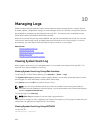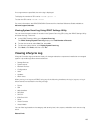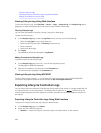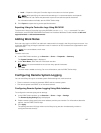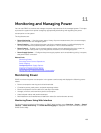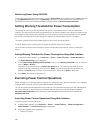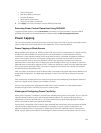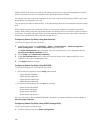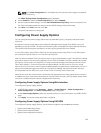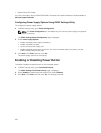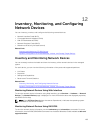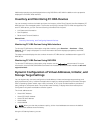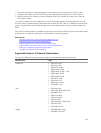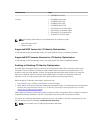• Power Off System
• NMI (Non-Masking Interrupt)
• Graceful Shutdown
• Reset System (warm boot)
• Power Cycle System (cold boot)
3. Click Apply. For more information, see the iDRAC Online Help.
Executing Power Control Operations Using RACADM
To perform power actions, use the serveraction command. For more information, see the iDRAC8
RACADM Command Line Interface Reference Guide
available at dell.com/support/manuals.
Power Capping
You can view the power threshold limits that covers the range of AC and DC power consumption that a
system under heavy workload presents to the datacenter. This is a licensed feature.
Power Capping in Blade Servers
Before a blade server powers up, iDRAC provides CMC with its power requirements. It is higher than the
actual power that the blade can consume and is calculated based on limited hardware inventory
information. It may request a smaller power range after the server is powered up based on the actual
power consumed by the server. If the power consumption increases over time and if the server is
consuming power near its maximum allocation, iDRAC may request an increase of the maximum
potential power consumption thus increasing the power envelope. iDRAC only increases its maximum
potential power consumption request to CMC. It does not request for a lesser minimum potential power
if the consumption decreases. iDRAC continues to request for more power if the power consumption
exceeds the power allocated by CMC.
After, the system is powered on and initialized, iDRAC calculates a new power requirement based on the
actual blade configuration. The blade stays powered on even if the CMC fails to allocate new power
request.
CMC reclaims any unused power from lower priority servers and subsequently allocates the reclaimed
power to a higher priority infrastructure module or a server.
If there is not enough power allocated, the blade server does not power on. If the blade has been
allocated enough power, the iDRAC turns on the system power.
Viewing and Configuring Power Cap Policy
When power cap policy is enabled, it enforces user-defined power limits for the system. If not, it uses the
hardware power protection policy that is implemented by default. This power protection policy is
independent of the user defined policy. The system performance is dynamically adjusted to maintain
power consumption close to the specified threshold.
Actual power consumption may be less for light workloads and momentarily may exceed the threshold
until performance adjustments are completed. For example, for a given system configuration, the
Maximum Potential Power Consumption is 700W and the Minimum Potential Power Consumption is
500W. You can specify and enable a Power Budget Threshold to reduce consumption from its current
191




